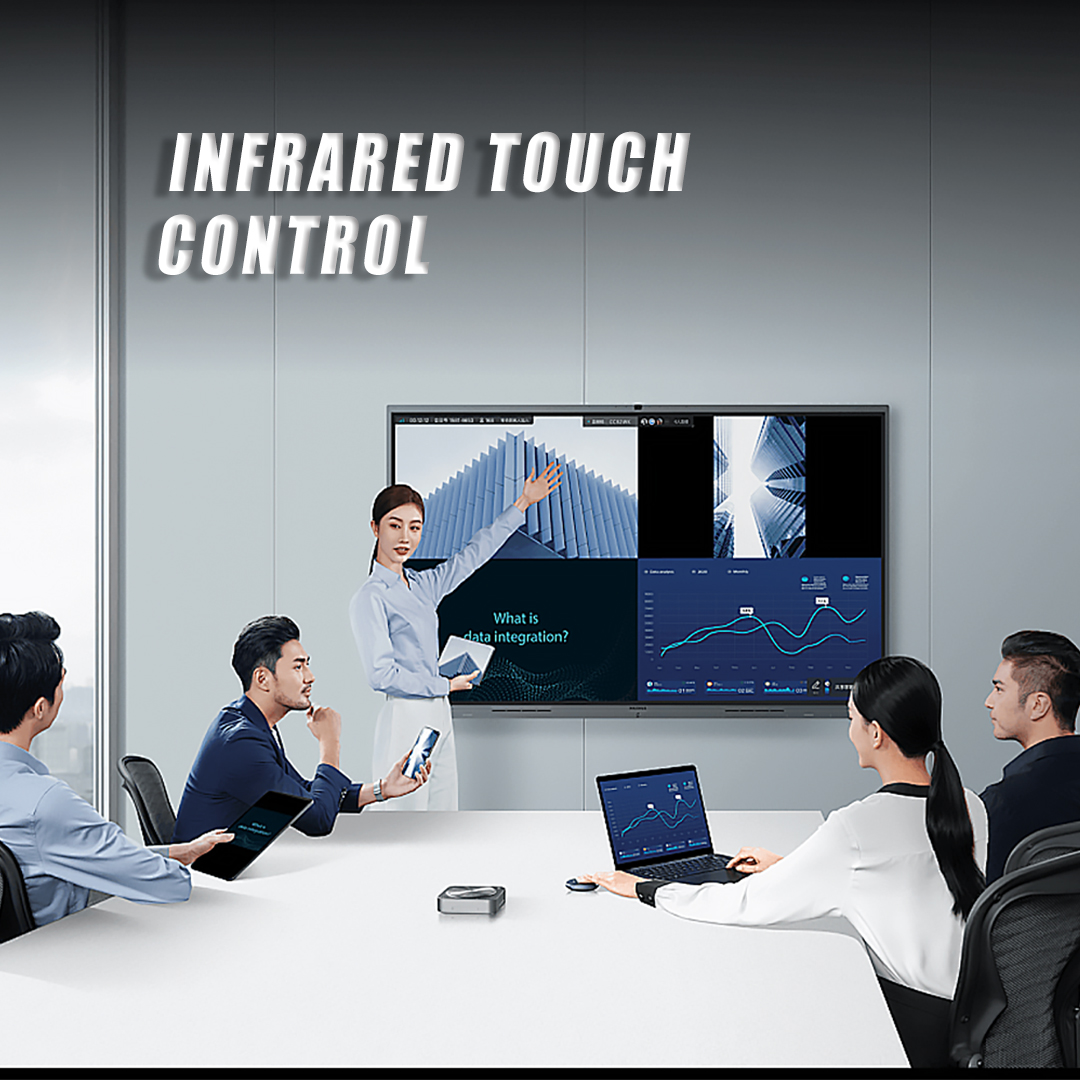The following are the differences between interactive and traditional whiteboards.
Functional features
Interactivity:
- Digital whiteboard: It has a strong interactive function. Users can directly operate on the whiteboard by touching, electronic pen, etc., such as dragging, zooming, rotating and other actions on the elements in the courseware. For example, in teaching, teachers can drag a geometric figure to the position at will to change the shape size, so that students can more intuitively understand the change process of the shape. Moreover, it can be connected to computers, projectors and other equipment to feed back the operation to the display screen in real time, so as to realize human-computer interaction and dynamic display of teaching resources.
- Traditional Whiteboard:The function is relatively simple, mainly as a writing platform, through the whiteboard pen on the surface of the whiteboard for writing and simple erasure. It does not have complex interactive functions like an interactive whiteboard for classroom, and is basically a static display, mainly relying on teachers to manually write words and draw simple graphics to convey information.
Multimedia Integration:
- Interactive whiteboard for classroom:1. Able to seamlessly integrate a variety of multimedia resources, such as video, audio, animation, etc. Teachers can directly insert video files into the whiteboard software, play relevant videos to assist teaching when explaining knowledge points, and can also embed web links to open web pages for content expansion at any time.
- Traditional Whiteboard:2. It does not have the function of integrating multimedia resources, and it needs to use external equipment to display multimedia content, such as using a projector to play video alone, and it is impossible to directly operate multimedia content on the whiteboard.
Content Storage and Sharing:
- Electronic whiteboard:The operation process on the whiteboard can be recorded, including the content written, the steps of operation, etc., and the content can be stored in the form of electronic files. These files can be easily shared over the Internet or on a storage device, for example, teachers can share a whiteboard record of the entire lesson with students for students to review after class.
- Traditional Whiteboard:There is no built-in storage function, if the content written by the teacher wants to be saved, it can only be shared by taking pictures or manually copying, and it is more troublesome to share, and there is a lack of convenient digital sharing channels.
Technical principles
- Interactive Whiteboard:It is based on a variety of display technologies, such as liquid crystal display (LCD), plasma display (PDP), etc. At the same time, induction and positioning technology is adopted, and the common electromagnetic induction technology is used, which determines the position and action of the pen through the electromagnetic pen and the electromagnetic induction coil inside the whiteboard; Infrared sensing technology, which uses the infrared transmitting and receiving device of the whiteboard frame to detect the position of the touched object; There is also capacitive sensing technology, which locates based on changes in the capacitance of the human body or touched objects. These technologies enable interactive whiteboards to precisely perceive the user's actions.
- Traditional Whiteboard:It is mainly to coat a layer of special materials on the surface of the whiteboard, such as enamel, resin, etc., so that it has good writing performance, and can make the handwriting written by the whiteboard pen clear and easy to erase. Its technology is relatively simple, and there is no need to involve electronic display and complex sensing and positioning technology.

Differences in application scenarios
Teaching Scenario:
- Interactive Whiteboard:Widely used in modern interactive teaching. Teachers can make use of its rich teaching resource library and interactive functions to carry out a variety of teaching activities, such as group competitions, classroom interactive games, etc. At the same time, in remote teaching, interactive whiteboards can be combined with video conferencing software to allow teachers and students to conduct real-time interactive teaching in different locations, teachers can remotely operate the content on the whiteboard, and students can also see and participate in the interaction synchronously.
- Traditional whiteboard:2. It is more suitable for simple knowledge explanation and board book, which is mainly used for teachers to write the teaching focus, difficulties and derivation process in the classroom, and assist the traditional lecture-style teaching method.
Business Scenario:
- Interactive Whiteboard:1. It is used for efficient conference presentation and interaction in corporate meetings. For example, in a product presentation, you can display the 3D model of the product directly on the whiteboard, and rotate and disassemble it to give participants a better understanding of the product. It also enables remote collaboration, where team members in different locations can discuss and revise ideas on a whiteboard at the same time.
- Traditional whiteboard:2. It is mainly used for simple meeting minutes and basic content display, such as recording meeting agendas, key points, etc., and the function is relatively limited to writing and simple marking.

 Mr. zptouch01
Mr. zptouch01



